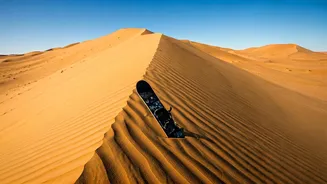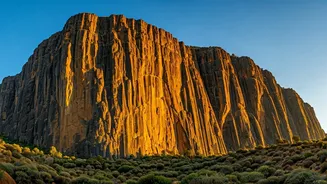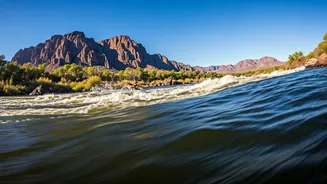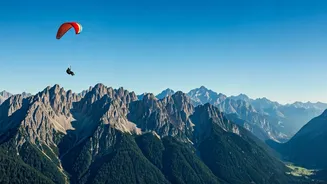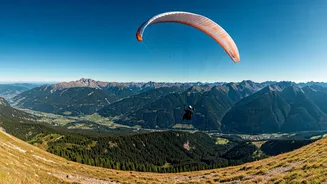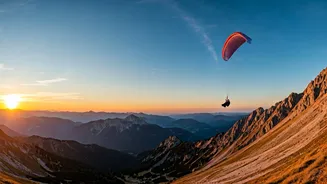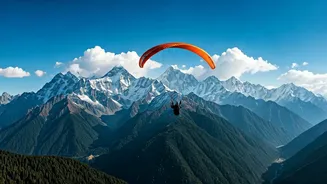Gear Up Right
Before hitting the Namibian dunes, it's vital to have the right equipment. Firstly, the most crucial item is a sandboard, specifically designed for sliding
down sandy slopes. These boards usually have a slick base, similar to a snowboard, to allow for smooth gliding. Next, sturdy boots are essential, providing ankle support and a secure fit for the board's bindings. Protective gear is non-negotiable. A helmet should be worn at all times to safeguard your head from impacts during falls. Goggles are equally important, shielding your eyes from sand, sun glare, and wind. Consider using a mouth guard to protect your teeth. Additionally, long sleeves, pants and gloves will safeguard your skin. Finally, carry plenty of water to stay hydrated in the desert heat. Also, sunscreen is vital to protect against the sun.
Best Sandboarding Spots
The Namib Desert offers a number of prime sandboarding locations. One of the most popular spots is Swakopmund, where numerous dunes offer diverse slopes for all skill levels. The 'Dune 7' is a popular choice for beginners, with its gentler slopes providing an accessible entry point. For the more experienced boarders, there are steeper and faster dunes available, like those at the 'Moon Landscape'. Walvis Bay, a coastal town near Swakopmund, provides easy access to some of the best sandboarding areas. The dunes in this area are known for their vast size and varied terrain. The Spitzkoppe region, although further inland, also boasts some stunning dunes, which reward visitors with a unique experience and fantastic views of the surrounding landscape. Always research the area before visiting to ensure the conditions are suitable and safe.
Optimal Sandboarding Seasons
The best time to experience sandboarding in Namibia largely depends on the climate. The Namibian climate is primarily arid, with sunshine throughout the year, making it ideal for outdoor activities. Generally, the cooler months, from April to October, are preferable. During this period, the temperatures are milder, and the strong winds that can affect sandboarding are less frequent. The summer months, between November and March, can become excessively hot, with temperatures soaring, thus, causing the sand to get very hot, making it less comfortable for sandboarding. However, these months can offer the advantage of fewer crowds. Regardless of the season, check the weather forecast before heading out. Wind can significantly affect the quality of your sandboarding experience, and strong winds can make it dangerous. Remember to stay hydrated and apply sunscreen, no matter the time of year.
Beginner-Friendly Tips
Sandboarding can be mastered with practice and patience, especially for beginners. Start on smaller, less steep dunes to build confidence and develop your balance. Positioning yourself correctly on the board is key. Stand with your knees bent and your weight slightly forward, similar to snowboarding. Beginners should focus on maintaining a balanced stance to control the board's movement. Also, to control your direction, lean gently in the direction you want to go. For turning, shift your weight to the heels or toes of your feet. Falling is inevitable, so learn to fall safely. Try to roll to minimize the impact and protect your head and other sensitive areas. It is advisable to take lessons from a professional or experienced sandboarder to get tips and learn the basics. Most importantly, have fun and enjoy the unique experience.
